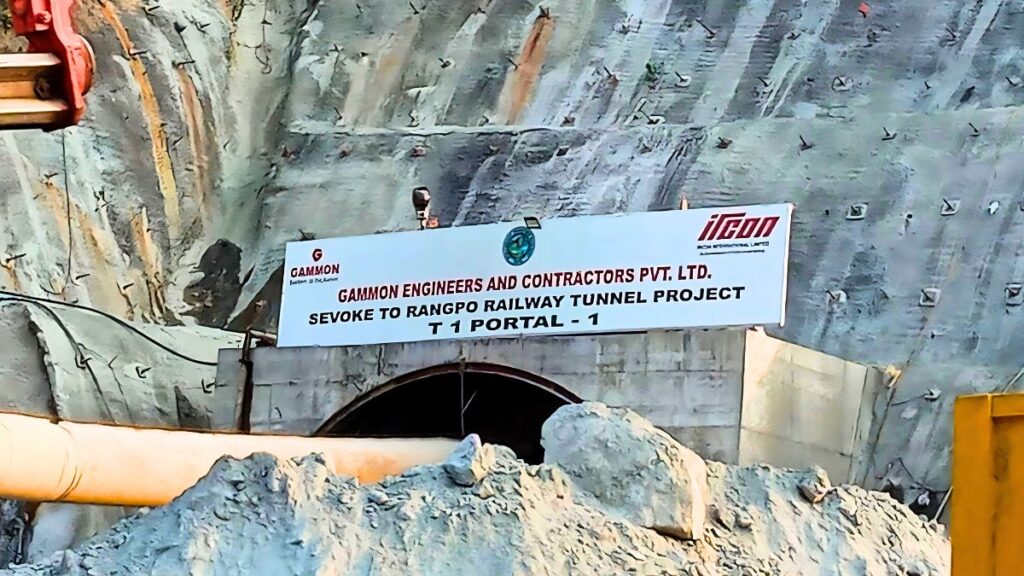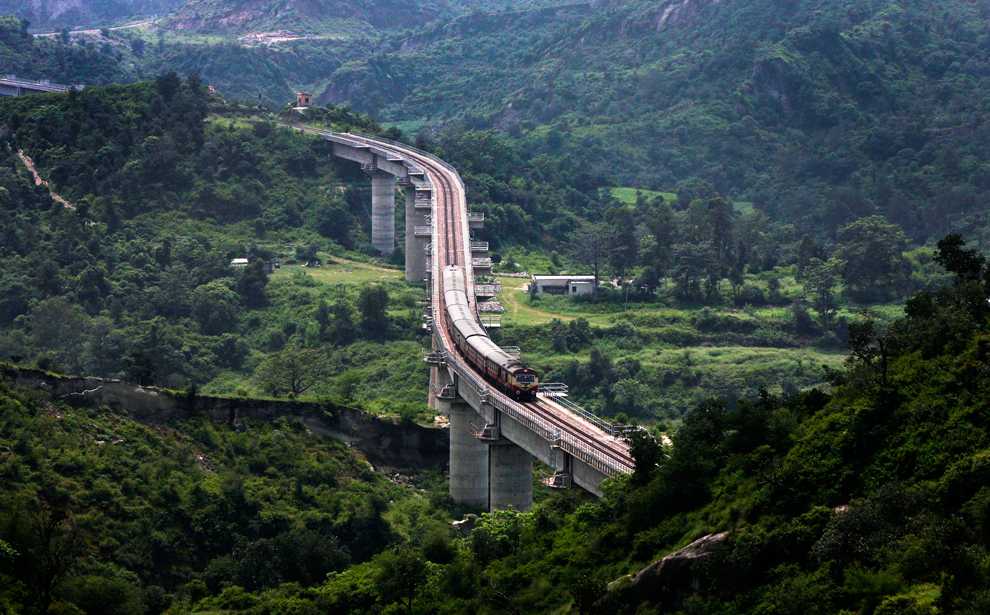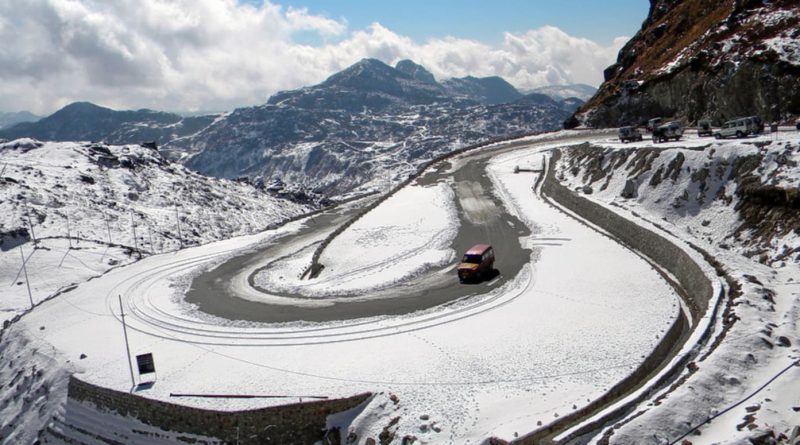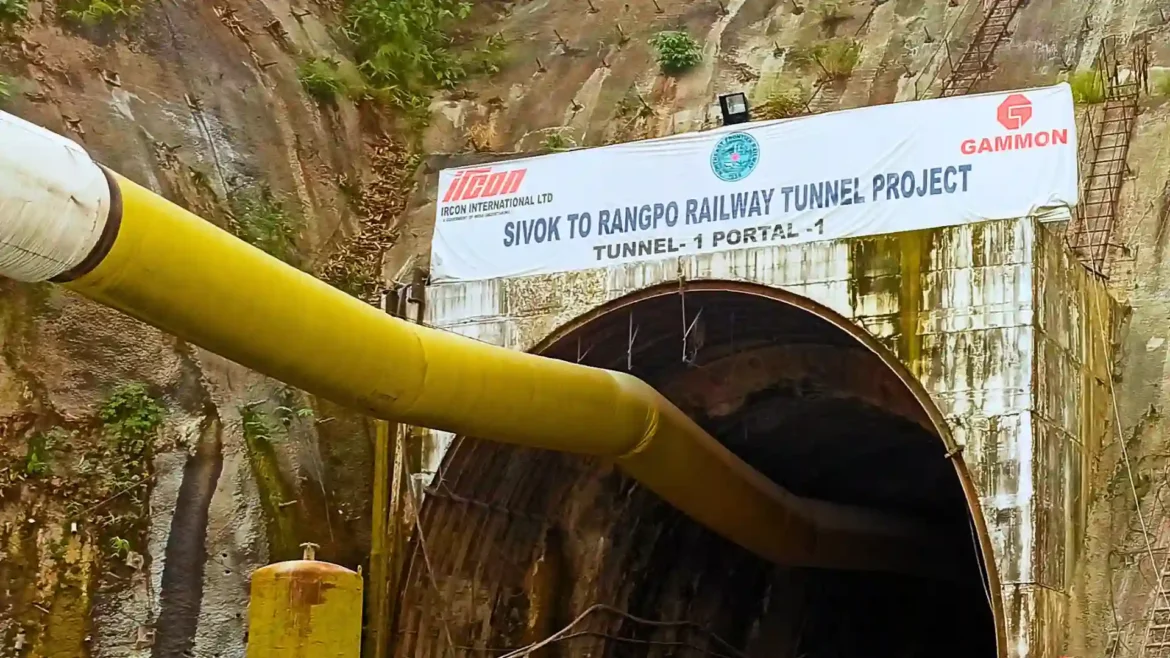Sikkim’s 49 years of wait ends as the state will get its first railway station. Amarjeet Agrawal, the Deputy Railway Manager of Alipurduar, emphasized the Rangpo station’s dual importance for Sikkim and India. He clarified that the railroad station would have dual uses for military and tourism. This enormous railway project, if sources are to be believed, will be completed in three stages: the first would include the Sevoke to Rangpo rail project; the second will involve Rangpo to Gangtok; and the third will involve Gangtok to Nathula.
Sikkim, the only Indian state without access to railways, is now all set to get its first railway station. PM Narendra Modi laid the first foundation stone on 26th February 2024. It is the first Indian underground station that will be designed and construct built as part of the Sivok-Rangpo Railway project that was launched in 2009 October . This development of the first railway station in Rangpo marks a milestone in the history of the Himalayan Kingdom. This new railway station has dual significance,, catering to defence as well as tourism purposes.
As per Amarjeet Aggrawal “Deputy railway manager of Alipurduar
“Rangpo station is the form of a touristic and defensive point of view for Sikkim and India”. He added “Basically, Sikkim did not have a railway line earlier. The government has signed this project in three phases. In the first phase, Sevoke to the Rangpo rail project; in the second phase, from Rangpo to Gangtok; and in the third phase, from Gangtok to Nathula,”.
Amarjeet Aggrawal “Deputy railway manager of Alipurduar
The line will have in total five stations including Teesta Bazaar which could be the first Indian underground halt station. Other than this, one line will have four more stations comprising Riyanh, Melli, Sivok and Rangpo. This project will be initiated and completed in 3 phases. The first phase will focus on the Sevoke to Rangpo rail project.

The full Sevoke Rangpo line will span about 45 km, with 3.5 km falling within Sikkim and the left one in West Bengal. The project comprises 14 tunnels and 22 bridges, and the track is specifically prepared to accommodate 25-ton loads to facilitate trains running at speeds of up to 110 kmph.
The design and decor of this railway station in Sikkim will be inspired by the rich architecture, culture and heritage of the state. The subsequent phases will extend the railway line from Rangpo to Gangtok and, after that from Gangtok to Nathula.
Thus, the new railway station of Sikkim aims to boost tourism and offer the residents the third and primary mode of transport. The project is also expected to increase connectivity and travel reliability to and within various Sikkim Tourist Places . This project is expected to be completed by December 2024, with an overall cost estimate of Rs 12,474.07 crore.
According to Sikkim Governor Lakshman Prasad Acharya,
“The foundation stone laying for the Rangpo railway station is a historic and proud moment for Sikkim, underscoring its significance in the context of ‘Viksit Bharat@2047’ and its potential to enhance the tourism sector by offering expedited and convenient travel options,”.
Sikkim Governor Lakshman Prasad Acharya,
The Sivok-Rangpo Railway Link project is now nearing completion. Its purpose was to close the connectivity gap that existed between West Bengal and Sikkim. The project, which has three stages, intends to improve connectivity in the area by extending it from Sevoke to Rangpo, Rangpo to Gangtok, and Gangtok to Nathula at the Indo-China border in East Sikkim.
There will be fourteen tunnels and twenty-eight bridges along this rail line that runs from Sevoke in West Bengal to Rangpo in Sikkim. Approximately 38.5 kilometers of the track will travel via tunnels. With its planned construction at the foothills of the Kanchanjungha mountain range, the railway track will provide travelers with a breathtaking experience as it crosses the steep gorges and valleys of the enchanting Teesta river.
Rangpo Railway Station, which is almost finished and expected to open for business by December 2024, is one of the project’s main objectives. It is Sikkim’s first railway station. Teesta Bazar is anticipated to become the first subterranean railway station in India in addition.
Travelers’ seamless connection via the Sivok-Rangpo Railway Link has the potential to revolutionize Sikkim tourism. Currently, large railway stations like Siliguri and New Jalpaiguri—which are more than 100 kilometers from Gangtok, the capital of Sikkim—are the main hub for passengers. However, as the Rangpo Railway Station is just 38 kilometers from Gangtok and 21 kilometers from Pakyong, Sikkim’s only airport, the direct railway link to Sikkim will revolutionize travel logistics, cutting down on transit time and improving the whole visitor experience.
On the other hand, the Tista Bazaar Railway Station, also called Teesta Bazaar Railway Station, is a new underground railway station that is close to Teesta Bazar and serves the Kalimpong district of West Bengal, as well as the nearby communities of Tribeni, Lopchu, Peshok, and Chitrey.
The Teesta Bazaar Railway Station is a noteworthy landmark in the development of India’s railway infrastructure as it is the nation’s first subterranean railway station. Under development, this subterranean station will improve accessibility and connection for both locals and tourists.
Important Details of the Sikkim’s First Railway Link

| Information | Details |
|---|---|
| Name | Sivok-Rangpo Railway Link |
| Rail Route | Sevoke (West Bengal) to Rangpo (Sikkim) |
| Length | 44.98 km |
| Stations | Riang, Gailkhola, Teesta Bazaar, Melli |
| Nearest Junction | New Jalpaiguri (30 km from Sevoke through Siliguri) |
| Route Under Tunnels | 38.53 km (86%) |
| Number of Bridges | 28 |
| Number of Tunnels | 14 |
| Longest Tunnel | 5.1 km |
The Sivok-Rangpo Railway Line is an amazing achievement of engineering and environmental concern since it passes across a variety of topography and landscapes, including important natural reserves and river systems. This is a thorough summary of the itinerary:
Traveling Through Wildlife Reserves and Water Systems
The Mahananda Wildlife Sanctuary, a protected area renowned for its great biodiversity and unique environment, is traversed by the railway line. The railway line’s passage through this sanctuary, which is home to a variety of plant and animal species, requires careful planning to minimize any negative ecological effects.
The route also passes across the Rivers Teesta and Rangpo, two of the area’s most important waterways. These rivers provide vital water supplies for the nearby towns in addition to supporting the regional ecology. The railway line’s route beside these rivers emphasizes how important it is to preserve the ecosystem and safeguard water supplies.
Route via Villages and Towns
The railway line goes through a number of villages and towns along its winding route from Sivok to Rangpo, each of which adds to the distinctive cultural fabric of the area. They include, among others, Chanatar, Melli, Kirnay, Tarkhola, Rangpo, Khanikhola, Birik Daara, Teesta Bazaar, Kalijhora, Chitrey, Lohapul, Gailkhola, and Teesta Bazaar.
Crossing Forest Divisions: The line passes through many forest divisions, including the Sikkim Pakyong District Forest Division and the West Bengal Darjeeling, Kurseong, and Kalimpong Forest Divisions. In addition to being important from an ecological standpoint, these wooded areas are essential for preserving the biodiversity of the area and giving animals habitat.
Environmental issues
Environmental issues are very important because of the sensitive nature of the locations that the railway line runs through. To guarantee that there is as little disturbance to the local ecosystem as possible, the project has included features like animal corridors, environmentally friendly building techniques, and impact mitigation.
Overall, the Sivok-Rangpo Railway Line’s route emphasizes the significance of sustainable infrastructure development in environmentally vulnerable areas by showcasing the complex balance between development and environmental protection. The railway line intends to improve connectivity while protecting the natural heritage of the regions it passes through with careful planning and execution.
Train from Gangtok to Nathula
An important turning point in the project’s development is the proposal to continue the railway line to Gangtok and ultimately Nathula, which is located on the border between India and China. Situated among the magnificent Himalayan scenery, Nathula is of great historical and geopolitical importance. It draws tourists who are eager to experience its natural beauty and learn about its cultural history since it is a well-known tourist attraction. The railway extension to Nathula will provide new opportunities for the growth of the tourist industry and provide visitors with an amazing trip to this famous location.
Cutting Down on Reliance on Roads
The Sivok-Rangpo Railway Link’s construction and eventual expansion would greatly lessen the need for road travel to reach Sikkim. Currently, Siliguri and New Jalpaiguri, the closest major railway stations, act as the primary entry points for train travelers into Sikkim. The construction of a direct railway link to Sikkim will simplify travel arrangements, shorten journey times, and improve tourists’ overall travel experiences.
The railway link project between Sivok and Rangpo, together with its expansion to Gangtok and Nathula, is a game-changer that will help unleash Sikkim’s tourist potential. The project has the potential to improve Sikkim’s standing as a top tourism destination in the Himalayan area by lowering travel obstacles, improving accessibility, and ensuring continuous connection. With the growth and development of the railway network, visitors may anticipate taking unique trips to see the captivating landscapes and rich cultural legacy of Sikkim.
How to Reach Sikkim Now

By air:
The closest airport to Sikkim’s capital city is Bagdogra Airport, which is located around 125 kilometers from Gangtok. Many airlines provide frequent flights from major Indian cities including Delhi, Chennai, Bangalore, Guwahati, and Kolkata to Gangtok, including IndiGo, Air India, Jet Airways, AirAsia India, GoAir, and SpiceJet. After exiting the airport, you may take a cab or taxi to go to Gangtok. The trip takes no more than five hours.
In addition, Sikkim has developed its own airport, known as Pakyong Airport, which debuted in May 2018. Although the airport is not yet completely operational, it will be shortly. I’ll keep you informed.
By road:
Darjeeling (96 km), Siliguri (118 km), and Kalimpong (75 km), to mention a few, are just a few of the neighboring and surrounding cities that Gangtok, the capital of Sikkim, has excellent road communication with. State-run buses, along with luxurious roads, are readily available from Siliguri, Darjeeling, Kalimpong, and Kurseong to Gangtok. Bus travel may be a bit lengthy, but the route is well worth it because of how gorgeous and picturesque the roads are. Buses are also cost-effective.
Taxis from New Jalpaiguri NJP are another excellent, quicker, but somewhat more expensive alternative; the trip takes 4 to 5 hours. The views of the verdant fields and picturesque hills along the route are breathtaking, and the well-maintained roads will captivate you for a long time.
By train:
Train passengers visiting Sikkim may reserve tickets up to the New Jalpaiguri railway station, which is located around 120 kilometers from Gangtok, the state’s capital. Trains travel this route in multiples, linking the destination to the rest of the nation. Popular Indian cities including Bengaluru, Chennai, Delhi, Mumbai, Kolkata, and Kochi have regular trains. There are plenty of taxis and buses leaving from the train station that go to Gangtok.


Comments are closed.